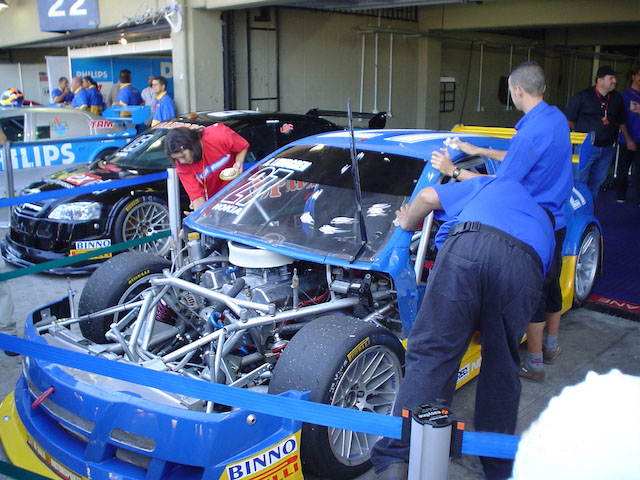The Thrill Of The Automobile Race
An automobile race is a high-speed competition where drivers push their machines to the limit. These events have been a staple of motorsport for over a century. They combine precision, speed, and strategy in a way few other sports can match. The adrenaline of the race, the roar of the engines, and the excitement in the air are what make automobile races truly captivating.
The evolution of automobile race
Automobile race began in the late 19th century, shortly after the invention of the automobile. The first recorded race took place in 1894 in France, a country that remains a hub for racing today. As the automotive industry evolved, so did the technology used in racing. Early races used basic vehicles, but over time, automobiles became faster, safer, and more technologically advanced. As automobile racing developed, the cars started to look more like the modern machines we see today. Innovations such as aerodynamic designs, powerful engines, and lightweight materials played a significant role in advancing the sport. These changes not only made cars faster but also allowed drivers to push the limits of speed and performance.
Key types of automobile races
There are various types of automobile races, each with its unique appeal and challenges. The most popular include Formula 1, NASCAR, Le Mans, and rally racing. Formula 1 races feature high-tech single-seater cars and are known for their speed and precision on closed circuits. NASCAR is an American racing series featuring stock cars on oval tracks. Le Mans is a prestigious endurance race that tests both the durability of the cars and the stamina of the drivers. Rally racing, on the other hand, involves cars racing through natural terrains like forests, deserts, and snow-covered roads. Each type of race presents unique challenges, and drivers must adapt their skills to succeed in these varied environments.
Technology behind automobile racing
The performance of a race car depends heavily on the technology used in its construction. Engineers and designers work tirelessly to create machines that are both fast and reliable. Materials such as carbon fiber, titanium, and advanced alloys are used to construct lightweight yet durable frames. The goal is always to reduce weight while maintaining strength. In addition to the car’s physical structure, the engine plays a pivotal role in determining speed. Modern race cars feature highly specialized engines designed for maximum power and efficiency. Many racing series use turbochargers, which force more air into the engine, boosting its performance. These engines are often finely tuned for peak performance in the high-pressure environment of a race.
Aerodynamics and speed
Aerodynamics is a major factor in automobile racing. The way air flows over and around the car can significantly affect its performance. Engineers design race cars with smooth, sleek bodies that minimize air resistance, allowing the car to move faster with less energy. The use of spoilers, diffusers, and air ducts helps manage airflow, increasing downforce and reducing drag. Downforce is especially important for maintaining stability at high speeds, particularly during sharp turns. A car with better aerodynamics can maintain better control and faster cornering speeds, making it more competitive in a race.
Suspension and handling
The suspension system of a race car is another area where technology plays a vital part. It is responsible for ensuring that the car maintains stability while navigating turns, bumps, and uneven surfaces. A well-engineered suspension system helps absorb shocks while keeping the car in contact with the road. Suspension systems use components such as springs, shock absorbers, and dampers to reduce the impact of road irregularities. Race teams spend countless hours fine-tuning these systems to suit the specific conditions of the track, ensuring optimal performance during the race.
The importance of tires in racing
Tires are one of the most crucial components of a race car. The right tire selection can make the difference between winning and losing. Race tires are designed to provide maximum grip on the track, which is essential for speed and control. The type of tire used depends on the conditions of the track, the temperature, and the type of race being conducted. Soft tires offer the best grip but wear out quickly, while harder tires last longer but provide less traction. Race teams make tire choices based on factors like weather conditions and track characteristics, adjusting tire pressure to optimise performance during the race.
Safety
Safety is a top priority in automobile racing. Drivers push their cars to the limit, and accidents can happen. To ensure their protection, race cars are equipped with several safety features. One of the most critical components is the roll cage, which provides structural integrity in case of a crash. In addition to the roll cage, race cars use fire-resistant materials, helmets, harnesses, and fire suits to protect drivers. These safety features have evolved over the years, making racing safer than ever before. Despite the dangers, the combination of advanced safety technologies and driver training helps minimize the risks involved.
Strategy
Success in an automobile race doesn’t just depend on speed. Strategy plays a significant role in how teams approach each race. From tire management to fuel consumption, there are countless variables to consider. Teams monitor a vast amount of data throughout the race, adjusting the car’s settings and making tactical decisions based on the situation at hand. Pit stops are a critical aspect of racing strategy. During these stops, crews change tires, refuel, and make necessary adjustments to the car. A well-timed pit stop can give a driver an edge, while a poorly executed one can cost precious seconds or even lead to a loss.
Endurance races and their challenges
Endurance racing is another exciting form of automobile competition. These races test the limits of both the car and the driver. Endurance races, such as the 24 Hours of Le Mans, require drivers to race for extended periods, often in shifts. These races are not won by sheer speed alone; strategy, stamina, and team coordination are just as crucial. Cars in endurance races are built for durability, with an emphasis on fuel efficiency and tire management. Drivers must pace themselves and maintain focus for hours, sometimes in extreme weather conditions. It is a test of both physical and mental endurance.
Popularity of automobile racing
Automobile racing has become a global phenomenon, attracting millions of fans from all corners of the world. Major racing events such as the Formula 1 Grand Prix, the Indianapolis 500, and the Monaco Grand Prix draw huge crowds and generate significant media attention. Fans follow their favorite drivers, teams, and manufacturers, creating a passionate fan base that supports the sport year after year. Television broadcasts and online streaming services have made it easier for fans to watch races in real-time. Social media has also played a role in growing the sport, as fans engage with drivers and teams directly. This connection between fans and the sport has helped elevate automobile racing to new heights of popularity.
Sustainability and the future of racing
As concerns over the environment continue to grow, the world of automobile racing is also evolving. Many racing series, including Formula 1 and NASCAR, are exploring ways to make the sport more sustainable. This includes the use of hybrid and electric vehicles, as well as efforts to reduce the environmental impact of racing events. In Formula 1, for example, hybrid engines combine traditional combustion engines with electric motors to improve efficiency and reduce emissions. Other series, such as Formula E, focus entirely on electric vehicles. The push for sustainability is shaping the future of racing and attracting a new generation of fans who are passionate about both speed and environmental responsibility.
Future of automobile racing
The future of automobile racing is filled with possibilities. Technological innovations continue to drive the sport forward, and new racing formats are constantly being explored. One exciting development is the rise of autonomous race cars. While self-driving technology is still in its infancy, the idea of autonomous vehicles racing at high speeds is already being tested in certain competitions. Additionally, virtual racing has gained popularity in recent years, with online racing leagues and esports competitions becoming mainstream. Virtual racing offers a unique way for fans to experience the thrill of the sport without ever leaving their homes. This combination of traditional and digital racing is likely to shape the future of the sport.
Speed, skill, and passion
Automobile racing is more than just a sport. It is a thrilling combination of speed, skill, and passion. Fans flock to races, drivers give their all, and teams work tirelessly to achieve victory. The evolution of technology, the growth of fan bases, and the ongoing search for sustainability will continue to push the boundaries of what is possible in the world of automobile racing. As the sport continues to evolve, one thing remains constant: the exhilarating chase for victory. The future of automobile racing promises to be just as exciting, if not more so, than what has come before. Fans around the world will continue to support the sport, eager to see what innovations and challenges the future holds for automobile racing.
Expose your brand at the East African Safari Classic Rally05 – 13 December 2025
|






